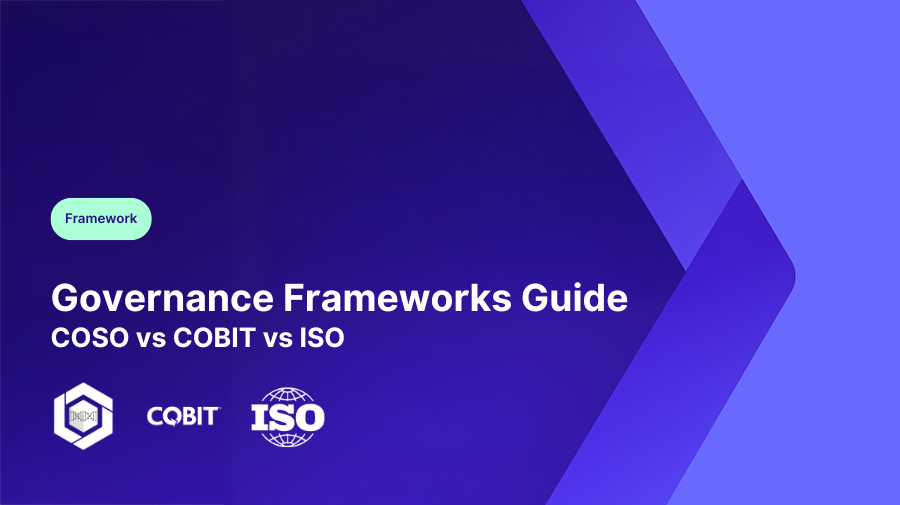Financial reporting and board oversight
Pick COSO when you need strong internal controls and enterprise risk alignment for SOX and audit confidence.

Organizations today are faced with an increasing number of demands to show both external compliance, as well as adequate internal governance. It doesn’t matter whether you are governing information technology risk, financial reporting, or data security: having a governance framework for clarity, accountability, and control is important.
COSO, COBIT, and ISO are examples of governance frameworks used extensively. Each framework takes a different approach, and understanding their differences allows companies to select the correct foundation of risk and compliance strategies they employ.
COSO (Committee of Sponsoring Organizations of the Treadway Commission) is a governance framework that emphasizes enterprise risk management (ERM) and internal controls.
COSO was originally developed to address corporate oversight related to financial reporting, but has evolved into a broader perspective of governance that encompasses strategy, risk, and performance. The core elements of COSO consist of five components:
Control environment: tone at the top, ethics, accountability
Risk assessment: identify and analyze business risks
Control activities: acceptable policies and procedures to mitigate risks
Information & communication: magnitude and reporting lines for data
Monitoring activities: ongoing assessment of the controls operating effectively
COSO is applied widely by financial institutions and public companies especially where compliance with Sarbanes - Oxley (SOX) is mandated.
COBIT (Control Objectives for Information and Related Technologies) is a governance framework designed for IT management and control by ISACA. It offers a structured approach for aligning IT activities with business objectives, while assuring security, reliability, and compliance of information.
The COBIT framework includes the following key principles:
COBIT will be most applicable to leaders responsible for IT and information security, especially in an organization attempting to align compliance across ITIL, ISO 27001, and NIST.
The ISO governance standards provide globally recognized best practices for management systems. While ISO 9001 focuses on quality management and ISO 27001 on information security, both reinforce governance by ensuring accountability, documentation, and continual improvement. ISO governance models rely on the Plan>Do>Check>Act (PDCA) cycle:
Plan: identify risks, set objectives, and define processes
Do: implement controls and train personnel
Check: audit results and monitor performance
Act: correct non-conformities and improve systems
ISO frameworks are ideal for organizations that value certification, international recognition, and structured continuous improvement.
Each framework plays a unique role:
Use COSO when:
Use COBIT when:
Use ISO when:
Many mature organizations use all three in tandem, leveraging COSO for enterprise risk, COBIT for IT alignment, and ISO for execution and assurance.
Choosing between COSO, COBIT, and ISO isn’t about selecting one; it’s about aligning them to your organization’s goals. Together, they form a continuum of governance: COSO defines direction, COBIT ensures IT alignment, and ISO operationalizes compliance.
With platforms like Complyance, organizations can map controls across frameworks, automate monitoring, and maintain visibility into every part of the governance ecosystem.
Can COSO and COBIT work together? Yes. COSO defines enterprise-level governance principles, while COBIT applies them within IT. Together, they ensure strategic alignment and operational accountability.
Is ISO 27001 equivalent to COBIT? No. ISO 27001 defines an Information Security Management System (ISMS), while COBIT is a governance model for IT processes and controls.
Does COSO certification exist? No. COSO is a framework, not a certifiable standard. However, organizations often align their internal audit functions with COSO principles.
